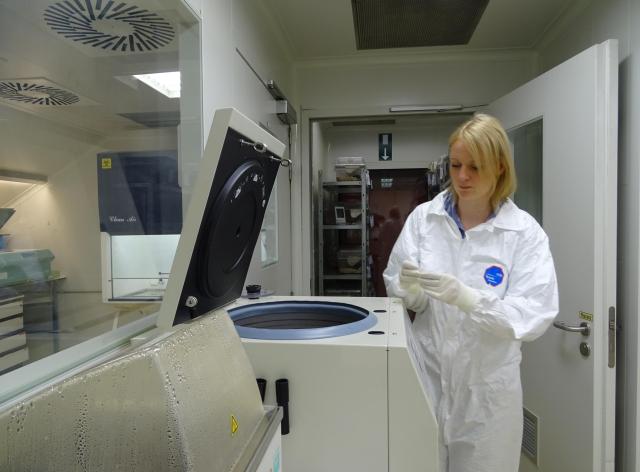The BL3 laboratory at the University of Namur is a high biosafety infrastructure dedicated to research on class 3 pathogenic microorganisms. This technological platform enables researchers to handle these agents under optimal containment conditions, in compliance with the strictest biosafety standards.
Description
Designed to meet the regulatory requirements of the Government of the Walloon Region (AM of July 04, 2002), BL3 provides a secure environment for the study of human pathogenic bacteria.
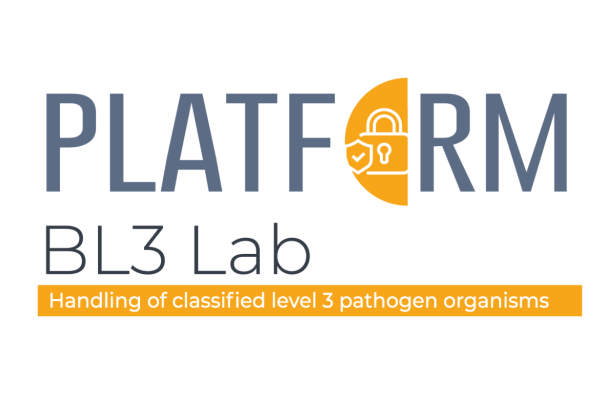
Key features
- Total area: 120 m² confined
- Enhanced safety:
- advanced filtration system
- double vacuum lock to prevent any escape of micro-organisms
Dedicated areas: - 3 isolation rooms
- an animal housing room
- a common preparation and service area
Standards and procedures
Before any intervention, researchers undergo full training on the safe handling of the facilities. Every experimental protocol is validated to guarantee maximum safety for all experiments.
We explain in video
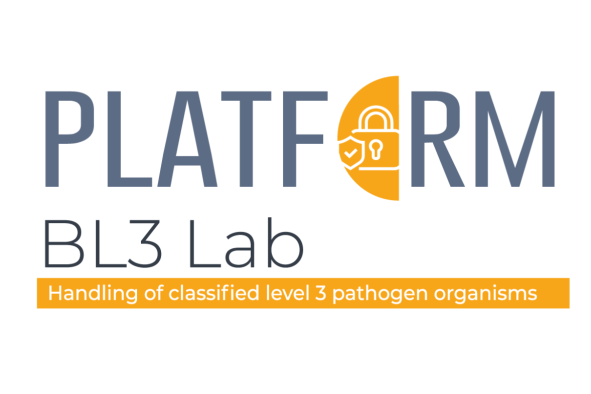
Equipment
Main equipment
- 2 fluorescence microscopes (epifluorescence microscope and inverted microscope with microfluidic system, each equipped with a digital camera)
- 1 -80°C freezer and 3 biological safety hoods
- incubators (with or without CO2)
- 1 bioscreen
Other features
- all materials (partitions, floors, furniture...) are non-porous and resistant to chemicals, making cleaning and decontamination efficient;
- the laboratory is kept under constant negative pressure to prevent any leakage to the outside;
- the incoming and outgoing air is constantly filtered ;
- organisms are handled in a safety class II microbiological environment;
- the power supply is self-sufficient in the event of a power failure;
- access control and locking systems for the 2 airlocks;
- waste is managed and processed, notably through a double-entry autoclave.
Spotlight
News
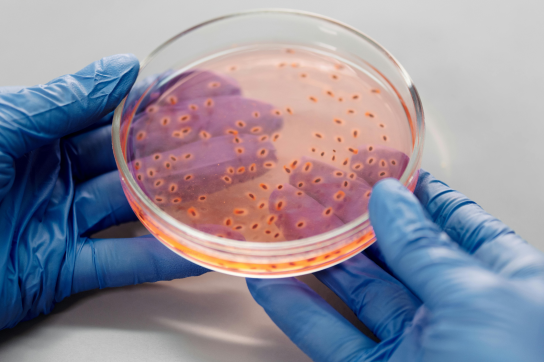
A prestigious publication for an international microbiology research team
A prestigious publication for an international microbiology research team
The team of professor Xavier De Bolle has just published an article in the prestigious EMBO Journal published by Springer Nature. His discovery? A lipid transport channel through the cell membrane of Brucella, the bacteria responsible for Brucellosis in cattle. This finding could be used to generate attenuated strains of the bacteria; a process used in vaccine manufacturing.
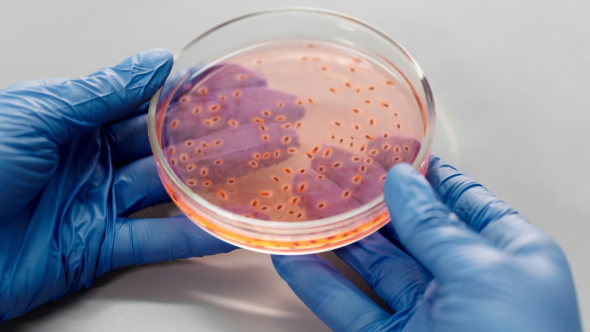
The study of Brucella is one of the areas of microbiology in which UNamur research teams have specialised for more than twenty years. This pathogenic bacteria infects livestock, causing Brucellosis, a disease that can be transmitted to humans through the consumption of unpasteurised dairy products, contact with infected animal tissue or inhalation. It is one of the most widespread zoonoses in the world.
A catalogue of weaknesses
Over the years of research, the team led by Professor Xavier De Bolle, Professor in the Department of Biology, member of the Microorganism Biology Research Unit (URBM) at the University of Namur and investigator at the WEL Research Institute, has been able to establish a kind of “catalogue” of Brucella's weaknesses.
There are millions of species of bacteria. It is therefore impossible to study them on a case-by-case basis. However, they have similar behaviours and functions, which is why a specific bacterium is considered the model: Escherichia coli (or E. coli), an intestinal bacteria found in warm-blooded organisms. Discovered in 1885, it has been the subject of numerous studies and has therefore become a reference in scientific literature.
A bacterium such as E. coli or Brucella is like an onion with only two layers (inner and outer membrane) and a central element (the cytoplasm) in which the organism produces everything it needs. It also exports elements to the outside, particularly lipids. However, these processes are still poorly understood, even for E. coli. Nevertheless, they represent an interesting avenue to explore to reach the heart of the pathogenic bacteria.
Mutants pave the way
During this research, which combined bacteriology and genetics, the researchers developed a technology that allows them to induce mutations in Brucella and also to identify where these mutations are located. They succeeded in creating a mutant that showed them the way to a veritable ‘lipid tunnel’, a passageway in the inner and outer membrane walls of the bacteria.
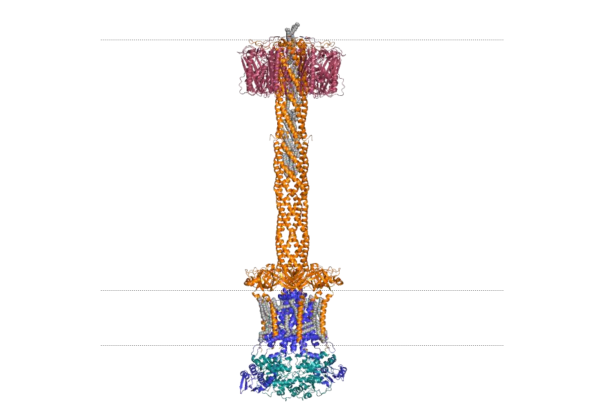
This provides valuable information about a new weakness in the pathogen and therefore provides information on how to combat it more effectively.

Our research, funded by the FNRS and the WEL Research Institute, is fundamental. Of course, we are still in the very early stages of developing applied processes. But we are taking another step towards unlocking the secrets of Brucella's armour so that one day we can hope to control the disease with an effective vaccine
An international research team
- Adélie Lannoy (currently post-doc in Toulouse) and Xavier De Bolle (URBM, UNamur – Belgium)
- Marc Dieu and Patsy Renard (UNamur, URBC - Belgium)
- Antonia García Fernández (Centro de Metabolómica y Bioanálisis (CEMBIO), Facultad de Farmacia, Universidad San Pablo-CEU – Spain)
- Raquel Condez-Alvarez (Department of Microbiology and Parasitology, Instituto de Investigación Sanitaria de Navarra (IdiSNA)University of Navarra – Spain)
The researchers would like to thank the FNRS and the WEL Research Institute for their support in this research. They would also like to thank the ‘Mass Spectrometry – MaSUN’ platform and the ‘Level 3 Biosafety Laboratory – BL3’ technology platform at UNamur for their cutting-edge equipment and expertise.
Xavier De Bolle - Mini CV
Xavier De Bolle presented his doctorate at UNamur (FUNDP at the time) in 1995. After 4 years of post-doc, including one at the University of Oxford, he joined URBM (Biology, Sciences), where he leads a research group. He has supervised 25 doctoral theses (including 4 in progress) and some of his former students have generated their own research team (at the UNamur, the UCLouvain, the VUB).
Professor Xavier De Bolle is a member of the URBM in the Department of Biology at the Faculty of Science of the University of Namur. He is a member of the Namur Research Institute for Life Sciences (Narilis).
Since June 2024, he is also a researcher at the WEL Research Institute for the Welbio-Health programme in the field of ‘Microbiology and Infectious Diseases’.
This work illustrates the cutting-edge expertise developed at UNamur in the field of molecular microbiology, an area in which UNamur has decided to invest by organising a master's degree in molecular microbiology since September 2019. This is a unique master's degree in Europe, taught entirely in English and rooted in research.
Find out more
- New clues to break through Brucella's armour (02/27/2023) - https://unamur.be/fr/newsroom/de-nouveaux-indices-pour-percer-larmure-de-brucella
- Alison Forrester and Xavier De Bolle awarded grants from the latest FRFS-Welbio call for projects (07/23/2024) - https://unamur.be/fr/newsroom/laureats-dernier-appel-projets-frfs-welbio

New clues to break through Brucella's armour
New clues to break through Brucella's armour
A team of microbiology researchers from UNamur has just published in the journal Nature Communications. The work focuses on the Brucella bacterium that causes Brucellosis, a disease that infects livestock and can be transmitted to humans. This research aims to better understand the molecular mechanisms of the bacterium's growth in order to better combat it.

L’étude de la bactérie Brucella est l’un des domaines de la microbiologie dans laquelle les équipes de chercheurs de l’UNamur se sont spécialisées depuis plus de vingt ans. Cette bactérie qui infecte le bétail est à l’origine de la Brucellose, une maladie transmissible à l’homme par la consommation de produits laitiers non pasteurisés, par contact avec des tissus animaux infectés ou encore par inhalation. Elle figure parmi les zoonoses les plus répandues au monde.
Au fil de ces années de recherche, l’équipe, dirigée par le professeur Xavier De Bolle, a pu établir une sorte de « catalogue » des faiblesses de Brucella. Ils ont pu mettre en évidence comment la bactérie construit son enveloppe externe, qui est son armure pour résister aux conditions extérieures. Dans ce contexte, il était également important de comprendre comment elle s’y prend pour faire grandir cette armure… sans la percer ! Le travail qui vient d’être publié montre où et comment Brucella achemine certains composants de son enveloppe vers l’extérieur. De plus, il identifie une nouvelle classe d’enzyme, une machine moléculaire complexe qui requise pour la construction d’une armure complète, et donc cruciale pour la capacité de Brucella à infecter ses hôtes.
« Grâce au travail de toute l’équipe, nous avons compris comment rendre la vie dure à Brucella. » explique le professeur Xavier De Bolle, de l’Unité de Recherche en Biologie des Microorganismes (URBM) de l’UNamur. « Notre recherche, financée par le FNRS, est fondamentale. Nous en sommes au stade qui précède le développement de processus appliqués. Mais la mise en pratique de nos découvertes pourrait à l’avenir permettre de construire un procédé biochimique qui obligerait Brucella à fabriquer une armure moins solide, voire l’empêcherait de la fabriquer tout court.
Nous avons pu bénéficier de l’appui des chimistes organiciens de l’UNamur, et notamment de l’équipe du professeur Stéphane Vincent, qui étudie également ces éléments de la paroi des bactéries. Une belle collaboration au sein de l’Institut NARILIS ».
Ces découvertes viennent d’être publiées dans la prestigieuse revue scientifique Nature Communications. Elles illustrent l’expertise de pointe développée à l’UNamur en matière de microbiologie moléculaire. Domaine dans lequel l’UNamur a décidé de s’investir encore davantage en organisant depuis septembre 2019, un Master en microbiologie moléculaire. Pour rappel, il s’agit d’un master unique en Europe, entièrement dispensé en anglais, ancré dans la recherche.
En savoir plus sur le Master en microbiologie moléculaire

A prestigious publication for an international microbiology research team
A prestigious publication for an international microbiology research team
The team of professor Xavier De Bolle has just published an article in the prestigious EMBO Journal published by Springer Nature. His discovery? A lipid transport channel through the cell membrane of Brucella, the bacteria responsible for Brucellosis in cattle. This finding could be used to generate attenuated strains of the bacteria; a process used in vaccine manufacturing.

The study of Brucella is one of the areas of microbiology in which UNamur research teams have specialised for more than twenty years. This pathogenic bacteria infects livestock, causing Brucellosis, a disease that can be transmitted to humans through the consumption of unpasteurised dairy products, contact with infected animal tissue or inhalation. It is one of the most widespread zoonoses in the world.
A catalogue of weaknesses
Over the years of research, the team led by Professor Xavier De Bolle, Professor in the Department of Biology, member of the Microorganism Biology Research Unit (URBM) at the University of Namur and investigator at the WEL Research Institute, has been able to establish a kind of “catalogue” of Brucella's weaknesses.
There are millions of species of bacteria. It is therefore impossible to study them on a case-by-case basis. However, they have similar behaviours and functions, which is why a specific bacterium is considered the model: Escherichia coli (or E. coli), an intestinal bacteria found in warm-blooded organisms. Discovered in 1885, it has been the subject of numerous studies and has therefore become a reference in scientific literature.
A bacterium such as E. coli or Brucella is like an onion with only two layers (inner and outer membrane) and a central element (the cytoplasm) in which the organism produces everything it needs. It also exports elements to the outside, particularly lipids. However, these processes are still poorly understood, even for E. coli. Nevertheless, they represent an interesting avenue to explore to reach the heart of the pathogenic bacteria.
Mutants pave the way
During this research, which combined bacteriology and genetics, the researchers developed a technology that allows them to induce mutations in Brucella and also to identify where these mutations are located. They succeeded in creating a mutant that showed them the way to a veritable ‘lipid tunnel’, a passageway in the inner and outer membrane walls of the bacteria.

This provides valuable information about a new weakness in the pathogen and therefore provides information on how to combat it more effectively.

Our research, funded by the FNRS and the WEL Research Institute, is fundamental. Of course, we are still in the very early stages of developing applied processes. But we are taking another step towards unlocking the secrets of Brucella's armour so that one day we can hope to control the disease with an effective vaccine
An international research team
- Adélie Lannoy (currently post-doc in Toulouse) and Xavier De Bolle (URBM, UNamur – Belgium)
- Marc Dieu and Patsy Renard (UNamur, URBC - Belgium)
- Antonia García Fernández (Centro de Metabolómica y Bioanálisis (CEMBIO), Facultad de Farmacia, Universidad San Pablo-CEU – Spain)
- Raquel Condez-Alvarez (Department of Microbiology and Parasitology, Instituto de Investigación Sanitaria de Navarra (IdiSNA)University of Navarra – Spain)
The researchers would like to thank the FNRS and the WEL Research Institute for their support in this research. They would also like to thank the ‘Mass Spectrometry – MaSUN’ platform and the ‘Level 3 Biosafety Laboratory – BL3’ technology platform at UNamur for their cutting-edge equipment and expertise.
Xavier De Bolle - Mini CV
Xavier De Bolle presented his doctorate at UNamur (FUNDP at the time) in 1995. After 4 years of post-doc, including one at the University of Oxford, he joined URBM (Biology, Sciences), where he leads a research group. He has supervised 25 doctoral theses (including 4 in progress) and some of his former students have generated their own research team (at the UNamur, the UCLouvain, the VUB).
Professor Xavier De Bolle is a member of the URBM in the Department of Biology at the Faculty of Science of the University of Namur. He is a member of the Namur Research Institute for Life Sciences (Narilis).
Since June 2024, he is also a researcher at the WEL Research Institute for the Welbio-Health programme in the field of ‘Microbiology and Infectious Diseases’.
This work illustrates the cutting-edge expertise developed at UNamur in the field of molecular microbiology, an area in which UNamur has decided to invest by organising a master's degree in molecular microbiology since September 2019. This is a unique master's degree in Europe, taught entirely in English and rooted in research.
Find out more
- New clues to break through Brucella's armour (02/27/2023) - https://unamur.be/fr/newsroom/de-nouveaux-indices-pour-percer-larmure-de-brucella
- Alison Forrester and Xavier De Bolle awarded grants from the latest FRFS-Welbio call for projects (07/23/2024) - https://unamur.be/fr/newsroom/laureats-dernier-appel-projets-frfs-welbio

New clues to break through Brucella's armour
New clues to break through Brucella's armour
A team of microbiology researchers from UNamur has just published in the journal Nature Communications. The work focuses on the Brucella bacterium that causes Brucellosis, a disease that infects livestock and can be transmitted to humans. This research aims to better understand the molecular mechanisms of the bacterium's growth in order to better combat it.

L’étude de la bactérie Brucella est l’un des domaines de la microbiologie dans laquelle les équipes de chercheurs de l’UNamur se sont spécialisées depuis plus de vingt ans. Cette bactérie qui infecte le bétail est à l’origine de la Brucellose, une maladie transmissible à l’homme par la consommation de produits laitiers non pasteurisés, par contact avec des tissus animaux infectés ou encore par inhalation. Elle figure parmi les zoonoses les plus répandues au monde.
Au fil de ces années de recherche, l’équipe, dirigée par le professeur Xavier De Bolle, a pu établir une sorte de « catalogue » des faiblesses de Brucella. Ils ont pu mettre en évidence comment la bactérie construit son enveloppe externe, qui est son armure pour résister aux conditions extérieures. Dans ce contexte, il était également important de comprendre comment elle s’y prend pour faire grandir cette armure… sans la percer ! Le travail qui vient d’être publié montre où et comment Brucella achemine certains composants de son enveloppe vers l’extérieur. De plus, il identifie une nouvelle classe d’enzyme, une machine moléculaire complexe qui requise pour la construction d’une armure complète, et donc cruciale pour la capacité de Brucella à infecter ses hôtes.
« Grâce au travail de toute l’équipe, nous avons compris comment rendre la vie dure à Brucella. » explique le professeur Xavier De Bolle, de l’Unité de Recherche en Biologie des Microorganismes (URBM) de l’UNamur. « Notre recherche, financée par le FNRS, est fondamentale. Nous en sommes au stade qui précède le développement de processus appliqués. Mais la mise en pratique de nos découvertes pourrait à l’avenir permettre de construire un procédé biochimique qui obligerait Brucella à fabriquer une armure moins solide, voire l’empêcherait de la fabriquer tout court.
Nous avons pu bénéficier de l’appui des chimistes organiciens de l’UNamur, et notamment de l’équipe du professeur Stéphane Vincent, qui étudie également ces éléments de la paroi des bactéries. Une belle collaboration au sein de l’Institut NARILIS ».
Ces découvertes viennent d’être publiées dans la prestigieuse revue scientifique Nature Communications. Elles illustrent l’expertise de pointe développée à l’UNamur en matière de microbiologie moléculaire. Domaine dans lequel l’UNamur a décidé de s’investir encore davantage en organisant depuis septembre 2019, un Master en microbiologie moléculaire. Pour rappel, il s’agit d’un master unique en Europe, entièrement dispensé en anglais, ancré dans la recherche.


